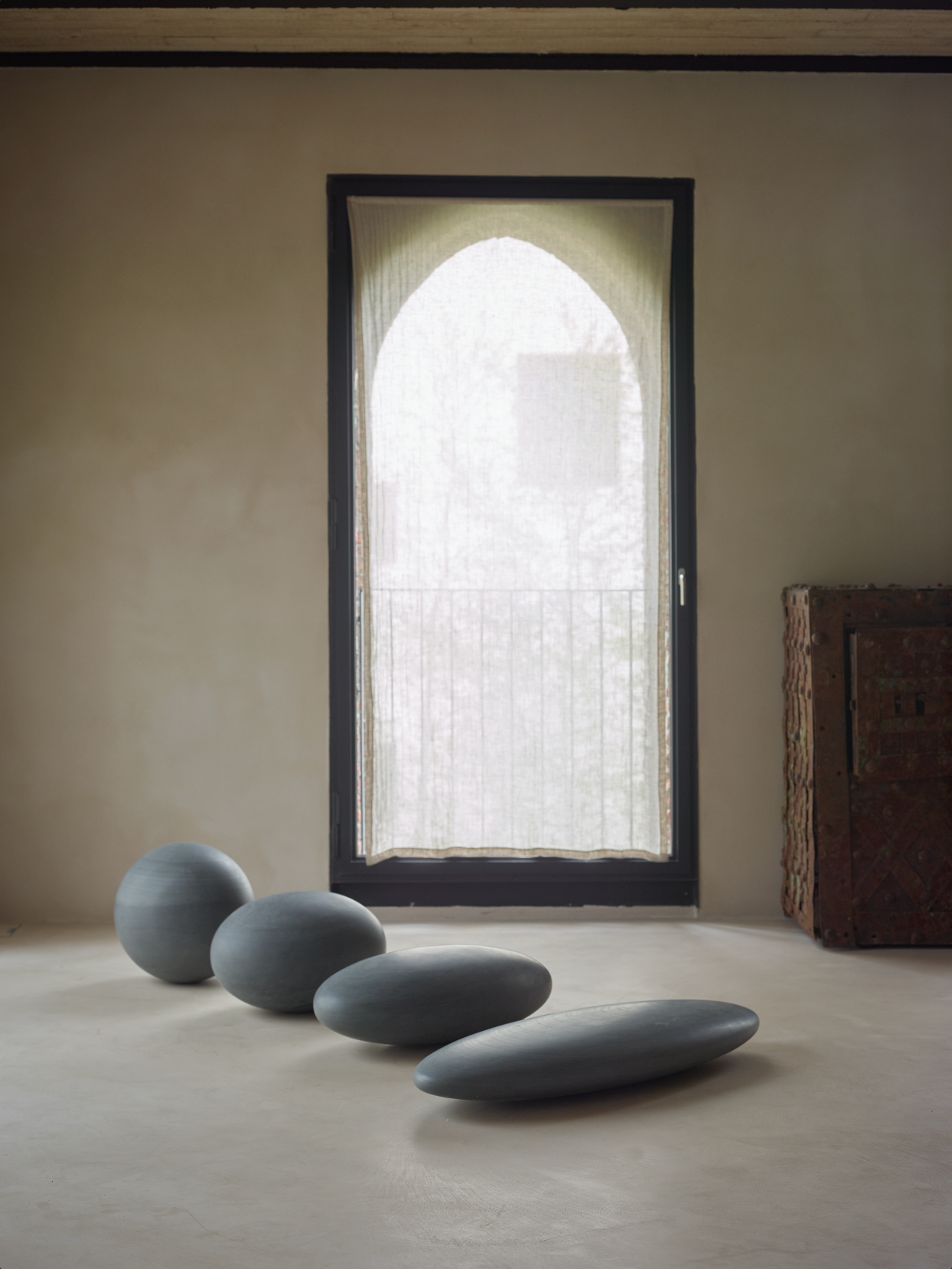Axel Vervoordt | Interview
At first glance, Kanaal appears simple and inconspicuous. But, upon entering the property, it is hard not to feel overwhelmed by its sheer presence and aura. The sun casts a golden haze over the premises' reaches, illuminating its pared-down architectural details. A built-in steel door handle, the brick work of a building, the leaves of a hornbeam tree. Once a derelict distillery, Kanaal is now the sprawling nerve center of luminary Axel Vervoordt, and a captivating sanctuary where art, architecture, and nature collide.
The 180,000-square-foot warehouse complex spans showrooms, exhibition spaces, a theater, and facilities for a range of other artistic endeavors. It is a place of historical significance, built circa-1860, where industrial features blend with artisanal touches. Rustic elements like whitewashed walls, galvanized steel and reclaimed wood are signature for Vervoordt’s style and predominate the spaces. He appears from among the trees, approaching in the line of sight with a pleasant rhythm in his stride. “Welcome, thank you for coming,” he says with a subtle smile while gesturing to follow him. “I have a space in mind where we can talk in comfort.”

Mostly known as an interior designer, art collector and antiquary, multi-hyphenate Axel Vervoordt began his sixty-year career at the tender age of fourteen. A young man in his formative years, he traveled to England all by himself. Scavenging for collectibles – silver wares, paintings, and Chinese furniture respectively – that he would then sell to his parents’ relatives. His business and collections grew, while developing an interest in design, which culminated in two businesses: an art gallery with outposts in Antwerp and Hong Kong and an interior design company. Fast-forward to today, and he has an inventory of over 16,000 objects – and he is an eminent tastemaker celebrated for his sophisticated flair. Notable clients include Sting, Calvin Klein and Robert De Niro.
After braving countless hallways, stairs and spaces – each more enthralling than the next – he opens the door to a tower-shaped room. The high-ceiling space is filled with books, with daylight entering from multiple directions. Vervoordt takes place behind a circular wooden table at the center. “To me, the act of looking at something, and then reacting to it, is reflection. But it could also be what reflects into something else, like a shadow,” he says. “Shadow is the first thing that stands out when I think of reflection. I recently reread the book In Praise of Shadows by Junichiro Tanizaki, and I find it wondrous how he describes the importance of shadow, and what one feels and sees, within a Japanese context.”

Reflection is a leitmotif in his personal life and holds parallels with his practice. “At the same time I think that reflection is what something radiates, more specifically in art,” he continues. “When an artwork radiates something, it evokes a physical sensation and awakens one’s intuition. Therefore, it can equally be a mirror image of ourselves. There is plenty of art that does not reflect at all, and simply caters to common sense. But I am drawn to works that are chest-grabbing. Within that attraction intuition is the master key, and to reflect on it is essential,” he concludes.

